Participants
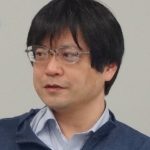
Endō Tōru, Keynote Speaker
遠藤徹
Professor, Tokyo Gakugei University
He holds a PhD in musicology from Tokyo University of the Arts. He has done extensive research on the history of Gagaku, with special focus on the reconstruction of ancient notations. His publications include Heian-chō no Gagaku: Ko-gakufu ni yoru Tōgakkyoku no gakuriteki kenkyū 平安朝の雅楽ー古楽譜による唐楽曲の楽理的研究 (Gagaku in the Heian Period: A Study of the music theory of Tōgaku compositions based on ancient scores, 2005), Amano-sha bugaku mandara-ku: Egakareta Kōyasan chinjusha Niutsuhime jinja sengū no hōraku 天野社舞楽曼荼羅供:描かれた高野山鎮守社丹生都比売神社遷宮の法楽(The bugaku mandala offering at Amano shrine: Religious music for the ritual reconstruction of the Niutsuhime shrine, the tutelary deity of Mt. Kōya, 2011), Gagaku wo shiru jiten (Encyclopedia of Gagaku, 2013), Utsukushiki gagaku shōzoku no sekai 美しき雅楽装束の世界 (The beautiful world of Gagaku costumes, 2017), as well as numerous articles on music theory in the Edo period. In collaboration with Miyata Mayumi, he has been reconstructing medieval lost music for the shō, such as chōshi and nyūjō.

Minamitani Miho
南谷美保
Professor, Shitennōji University
She works on the social history of Gagaku in the Edo period, with special focus on the musicians (gakunin) associated with Shitennōji. Her publications include Shitennōji Shōryōe no bugaku 四天王寺聖霊会の舞楽 (2008) and numerous articles on early modern professional musicians and their networks.

Takenouchi Emiko
武内恵美子
Associate Professor, Kyoto City University of the Arts, Research Center for Japanese Traditional Music
She holds a PhD in International Japanese Studies from the Graduate University for Advanced Studies (Sōgō Kenkyū Daigakuin Daigaku). Her research focuses on the intellectual history of the reception of Gagaku in the Edo period, as well as on the activities of performers in Kamigata Kabuki. She is the author of Kabuki hayashikata no gakushironteki kenkyū: Kinsei Kamigata wo chūshin ni 歌舞伎囃子方の楽師論的研究―近世上方を中心として (A study of the musicians in the Kabuki hayashi ensemble, with special focus on Kansai region in the Edo period, 2006) as well as of numerous articles on early modern Gagaku.
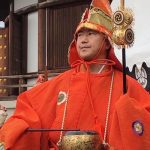
Ono Shinryū
小野真龍
Vice President and Artistic Director, Tennōji Gakuso Garyōkai
He holds a PhD in Philosophy of Religion from Kyoto University and is a performer of Gagaku and Bugaku. He is also the resident priest of Gensenji temple (Jōdo Shinshū Honganji-ha) in Naniwa-ku, Osaka. From September 2021 he will be a visiting professor at Kansai University. His publications include Heideggā kenkyū (recipient of the Nihon shūkyō Gakkai award), Gagaku no kosumorojī (2019), and numerous articles on philosophy, Gagaku, and Buddhist rituals.
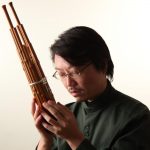
Manabe Naoyuki
真鍋尚之
Composer and performer of contemporary music for shō. He has contributed to establishing the shō as a soloist instrument. Based on traditional performance techniques, he has created a new style of omeribuki (canon) for shō, hichiriki and flute and for divided orchestra. As
producer of the Hideaki BUNNNO GAGAKU Ensemble and in other capacities, he
has been introducing Gagaku to Europe, the United States, and Latin America.
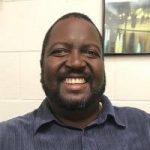
LeRon Harrison
Assistant Professor, Murray State University (Kentucky)
He holds a PhD in East Asian Studies from the University of California, Irvine. He studies Japanese court poetry, and is also a researcher and practitioner of
Gagaku and a practitioner and budding philosopher of
martial arts.
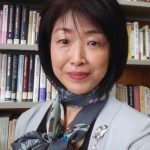
Ōuchi Fumi
大内典
Professor of musicology at Miyagi Gakuin Women’s University (Sendai), where she directs the Music Liaison Center.
She specializes in musicology and Japanese religions. She holds a PhD in Religious Studies (SOAS, University of London). Her book Bukkyō no koe no waza: Satori no shintaisei (Hōzōkan, 2016) received the 2017 Tanabe Hisao Prize. She is now working on a new project on the relations between music (musical instruments), maritime divinities, and political authority.

Terauchi Naoko
寺内直子
Professor at the Graduate School of Intercultural Studies, Kobe University
PhD (Osaka University, 1999)
She learned Gagaku from Maestro Shiba Sukeyasu. She works on Japanese traditional performing arts from various perspectives in relation to Asia and other parts of the world. Her publications include, Gagaku no rizumu kōzō 雅楽のリズム構造 [The rhythm structure of gagaku], 1996),
Gagaku no kindai to gendai 雅楽の〈近代〉と〈現代〉[Modern and contemporary Gagaku], 2010), Gagaku wo kiku 雅楽を聴く[Listening to Gagaku], 2011), Reirin gakuyū: Shiba Sukeyasu to gagaku no gendai 伶倫楽遊 芝祐靖と雅楽の現代 [Sukeyasu Shiba and Contemporary Gagaku], 2017) and What the Doctor Overheard: Dr. Leopold Müller’s Account of Music in Early Meiji Japan (2017), which won the Bruno Nettl Prize (2018) of the Society for Ethnomusicology.

Andrea Giolai
Lecturer in Japanese performing arts and anthropology of Japan at Leiden University’s Institute for Area Studies. His research focuses on the entanglement of textual, aural, and bodily practices in contemporary heritage discourses on Gagaku’s sonic past. His recent articles appeared in Asian Anthropology and the Journal of Religion in Japan.

Nakagawa Yūko
中川優子
PhD student, Tokyo University of the Arts She works on the Confucian interpretations of music in early modern Japan.
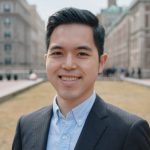
Momii Tōru
PhD candidate, Columbia University. His research concerns the transnational aspects of contemporary Japanese music.
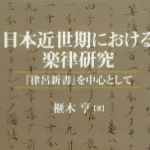
Kayaki Tōru
榧木亨
Lecturer, Nanchang University (China)
He holds a PhD from Kansai University, and specializes in the history of the cultural relations between China and Japan. He is the author of Nihon Kinsei-ki ni okeru gakuritsu kenkyū: Ritsuryo shinsho wo chūshin to shite 日本近世期における楽律研究―『律呂新書』を中心として.
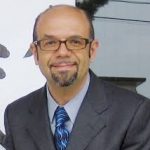
Fabio Rambelli
Professor of Japanese religions and cultural history and International Shinto Foundation endowed chair in Shinto Studies at the University of California, Santa Barbara. He holds a PhD in East Asian Studies (University of Venice and Oriental University Institute, Naples). His books include: Buddhas and Kami in Japan (with Mark Teeuwen, 2003), Buddhist Materiality (2007), Buddhism and Iconoclasm in East Asia (with Eric Reinders, 2012), A Buddhist Theory of Semiotics (2013), Zen Anarchism (2013), The Sea and the Sacred in Japan (2018), Spirits and Animism in Contemporary Japan (2019), Defining Shugendō (with Andrea Castiglioni and Carina Roth, 2020), and The Bloomsbury Handbook of Japanese Religions (with Erica Baffelli and Andrea Castiglioni, 2021). He works at the intersection of philosophical discourses, material practices, and everyday life in premodern Japan. He is currently writing a monograph on the cultural history of the shō, a Gagaku musical instrument.

Yamada Junpei
山田淳平
Investigator, Department of Cultural Property Preservation, Nara Prefecture
He holds a PhD (Kyoto University) and has published on various aspects of the diffusion and reception of Gagaku in the early modern period.

Deguchi Miki
出口実紀
Research fellow, Kyoto City University of the Arts, Research Centre for Traditional Japanese Music. She holds a PhD from Osaka University. She has published on various aspects of Gagaku and Bugaku at Tennōji in the Edo period.
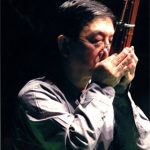
Bunno Hideaki
豊英秋
Director, Hideaki BUNNO GAGAKU Ensemble
Former Director of the Gagaku Orchestra at the Tokyo Imperial Palace.
Maestro Bunno is the 45th generation of the Toyohara House, a family that has transmitted the art of the shō (a type of mouth organ, an instrument unique to Gagaku) for more than 1300 years. In 2009, he received the prestigious prize of the Japanese Academy of the Arts. He is very active performing, teaching, and composing.